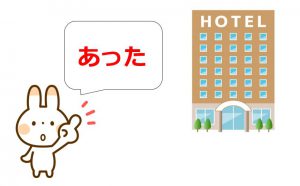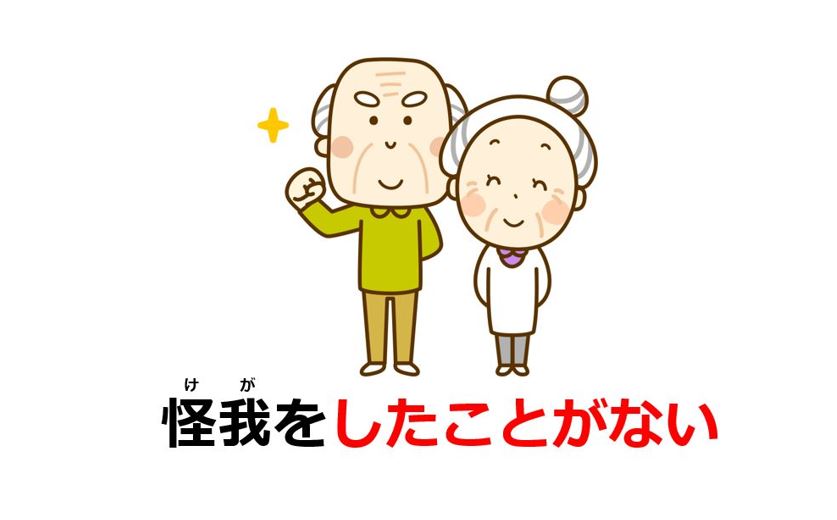Last time, you learned how to express discovery and recall by using the ta-form, e.g. “図書館があった (There is the library),” and “図書館があるんだった (I’ve recalled there is the library).” The various functions of the ta-form must be useful. However, you still need to learn some sentence patterns to express other tense and aspect. For example, if you try to say “Inoue-san has been a doctor before,” what should you do? In this lesson, we would like to focus on how to express experience.
Explanation for the Usage to Express Experience with the Ta-form and the Te-form
In English, you can express experience by using the same form as present perfect tense like “I have studied Japanese before,” and “I have just studied Japanese.” However, you have to use different sentence patterns in Japanese.
Ta-form + ことがある: Experience
| Affirmative | Negative |
|---|---|
| 見たことが(ある / あります) | 見たことが(ない / ありません) |
| したことが(ある / あります) | したことが(ない / ありません) |
| 来たことが(ある / あります) | 来たことが(ない / ありません) |
| 買ったことが(ある / あります) | 買ったことが(ない / ありません) |
| 読んだことが(ある / あります) | 読んだことが(ない / ありません) |
The first sentence pattern is …ことがある. The conjugation is very simple. You can just connect the ta-form with ことがある or ことがない.
Examples
| [私は / が] | 前に | 日本に | 行ったことが(ある / あります) |
| [Topic / Subject] | Adverb | Destination | Verb: Experience |
| [I] have been to Japan before. | |||
With this sentence pattern, you can express experience like “I have done it before.” If you use the ta-form at the end, i.e. あった / ありました, you can also express experience at some points in the past like ”I had done it before I was 20.” Adverbs and temporal nouns are optional, but they can clarify sentences.
| 日本語を勉強したことが(ある / あります)。 [I] have studied Japanese [before]. |
| 歌を歌ったことが(ない / ありません)。 [I] have never sung a song [before]. |
| 20歳までに足を怪我したことが(あった / ありました)。 [I] had injured my leg before I turned 20. |
| 最近まで海外に行ったことが(なかった / ありませんでした)。 [I] had never been abroad until recently. |
Note: you cannot use this sentence pattern in these two situations: the first is when you express ordinary things and the second is when you express things which happened recently; thus the following examples are unnatural:
| 歩いたことが(ある / あります)。 [I] have walked before. => Unnatural! |
| 昨日日本に行ったことが(ある / あります)。 [I] have been to Japan yesterday. => Unnatural! |
Related Expressions
…が + Ta-form + ことがある
| ジョンレノンがここに来たことが(ある / あります)。 John Lennon has come here [before]. |
| 大きな地震が起きたことが(ある / あります)。 A big earthquake has happened [before]. |
| 昔、雷が家に落ちたことが(ある / あります)。 Lightning has hit my house in the past. |
You can express general experience that people share by setting other people, events, accidents or incidents as a subject.
Plain (Dictionary) Form + ことがある
| 先生はタバコを吸うことが(ある / あります)。 There is a case where [my] teacher smokes. |
| お父さんは働かないことが(ある / あります)。 There is a case where [my] father doesn’t work. |
By using the plain (dictionary) form with ことがある, you can express “there is a case where…” in Japanese. This is not directly related to the expressions of experience, however, try to memorize this here because of the similarity of the forms.
| カレーは辛いことが(ある / あります)。 There is a case where curries are spicy. |
| 子供は勉強が嫌いなことが(ある / あります)。 There is a case where kids dislike studying. |
| 日曜日が仕事のことが(ある / あります)。 There is a case where Sundays are business days. |
Be careful; you need to use の when you connect nouns with ことがある. Regarding na-adjectives, you can use な as usual.
[adsense]
Te-form + いる: Experience
| (Progressive Tense) ごはんを食べている。 [I] am eating a meal. |
| (Resultant State) かばんを持っている。 [I] have a bag. |
| (Customary Action) 毎日朝ごはんを食べている。 [I] eat breakfast every day. |
You have learned the three usages of the te-form + いる so far. Considering the characteristics, it may sound unreasonable that the te-form + いる can also express experience. However, this is very natural and a high frequently used expression. With resultant states, momentary actions like “持つ: to hold” result in ongoing states like “持っている: to have.” We can reword the concept like this, “Momentary actions in the past affect states at present.” Let’s think about the concept of experience in that way, too.
| 田中さんは | 5年前 | インドの会社で | 働いて(いる / います) |
| Topic / Subject | Temporal Noun | Location of Action | Verb: Experience |
| Tanaka-san worked at an Indian company five years ago. *Said when you’re asked why he is promoted to a branch manager in India. |
|||
If you only read the English translation, you may think “田中さんは5年前インドの会社で(働いた / 働きました)” is right; however when the action is in the past (働く) greatly affects the present, the te-form + いる should be used. Here are more examples.
| ボブは去年、日本語能力試験N1に受かって(いる / います)。 Bob passed JLPT N1 last year. |
| 昔、日本に住んで(いる / います)。 [I] lived in Japan in the past. |
| トムは大学で書道を勉強して(いる / います)。 Tom studied calligraphy at university. |
You need to pay attention to time expressions. The te-form + いる works to indicate experience only when context indicates that past events are being discussed. With the following examples, 5年間 indicates duration so 働いている means a progressive action.
| 5年前インドの会社で働いています。 [I] worked at an Indian company five years ago. |
| 5年間インドの会社で働いています。 [I’ve] been working at an Indian company for five years. |
| 田中さんは | 3ヶ月前 | 膝を | 怪我して(いる / います) |
| Topic / Subject | Temporal Noun | Direct Object | Verb: Experience |
| Tanaka-san injured his knee three months ago. | |||
With the above example, what do you think about the current condition of his knee? The context is Tanaka-san’s performance in a soccer game; “Tanaka-san injured his knee three months ago, so I’m worried about his performance in the game today.” Chances are his knee has recovered, but you are still worried that the injury in the past affects today’s situation. The point here is that experience is not ongoing states. Here are more examples.
| 3ヶ月前、手術して(いる / います)。 [He] had an operation three months ago. |
| 3ヶ月前、入院して(いる / います)。 [He] was hospitalized three months ago. |
If his knee has not recovered, resultant states should be used. Note; the difference is just time expressions. With the following examples, the particle から indicates staring points and thus the te-form + いる expresses resultant states (the injury is ongoing).
| 3ヶ月前から膝を怪我して(いる / います)。 [He] has had a knee injury for three months. |
| 5月から膝を怪我して(いる / います)。 [He] has had a knee injury since May. |
Difference of ことがある and ている
Both of them express experience, however there are some differences in the usages.
1. ことがある Can Be Used with Nouns and Adjectives
| 医者だったことが(ある / あります)。 [I] have been a doctor [before]. |
| 親が嫌いだったことが(ある / あります)。 [I] have disliked [my] parents [before]. |
This is a simple, but important difference. ている cannot be connected with nouns and adjectives to express experience.
2. ている Can Be Used for Things in the Near Past
| 昨日、日本語を勉強して(いる / います)。 [I] studied Japanese yesterday. |
| 先週、テストの準備をして(いる / います)。 [I] prepared for the exam last week. |
As we mentioned earlier, …ことがる cannot be used for things in the near past.
3. ている Must Affect Something at Present
| ラーメンを食べたことが(ある / あります)。 [I] have eaten ramen [before]. |
| 寿司を食べたことが(ある / あります)。 [I] have eaten sushi [before]. |
When you use ている, actions you took in the past must affect states or conditions at present. If you just express whether you have experienced something or not, ことがある is more suitable than ている.
Summary
- …ことがある expresses whether you have experienced something.
- …ている expresses experience which affects something at present.
The usage of the te-form + いる, which is to indicate experience, can be an advanced topic. The reason why we have picked it up here is to enable you to identify in which functions the te-form + いる works. Please keep mind the te-form + いる indicates not only present progress tense and resultant states, but also experience as well. In the next lesson, you will learn about Japanese aspect.

Another Function of the Ta-form: Discovery and Recall

Japanese Aspect: the Beginning, Middle, & End of Actions



